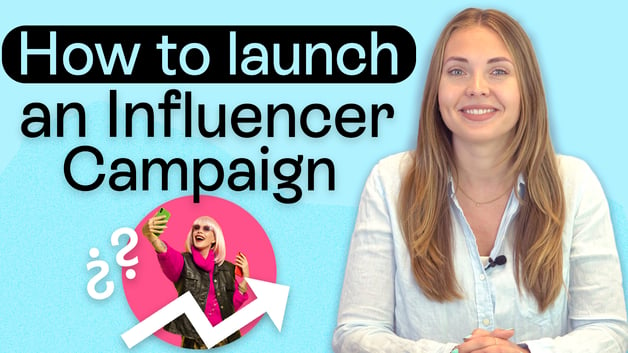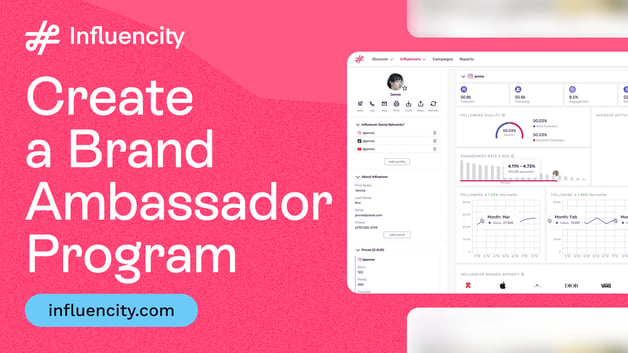Learn 5 Key Strategies for Building an Inclusive Marketing Approach in Your Influencer Campaigns
These days, consumers are more socially conscious than ever, and they expect brands to be the same. Gone are the days when marketing strategies could afford to overlook the importance of diversity and inclusion. Now, the way brands communicate and engage with their audiences must reflect the full spectrum of human experiences. As influencer marketing continues to rise, with more brands relying on influencers to connect authentically with their audiences, inclusive marketing is critical to creating campaigns that resonate on a deeper level.
A variety of recent statistics and trends support this shift. For example, a report from Edelman’s 2022 Trust Barometer highlights that 58% of consumers make purchasing decisions based on their values, particularly when it comes to brands that demonstrate social responsibility, including diversity and inclusion initiatives. Similarly, Google’s 2021 “Inclusive Marketing Playbook” revealed that 64% of consumers took action after seeing an inclusive advertisement, such as visiting a website or making a purchase
Another key finding comes from Accenture’s 2018 Global Consumer Pulse Study, which noted that 63% of consumers globally prefer to purchase from brands that stand for a shared purpose, with diversity being a significant factor in this equation. Additionally, 73% of Gen Z consumers in particular, who now account for an increasing portion of the market, say they are willing to pay more for products from brands that champion diversity.
However, inclusive marketing goes beyond simply showcasing diversity—it’s about fostering a sense of belonging, creating accessibility, and ensuring that all consumers feel seen and valued. In fact, recent research highlights that over 60% of consumers prefer brands that demonstrate commitment to diversity, and this influencer marketing trend is only gaining momentum. For marketers, this shift offers a unique opportunity: by making inclusivity a central part of their influencer marketing strategy, brands can generate more authentic connections, improve their ROI, and ultimately, build lasting trust with their audiences.
This article will walk you through five key strategies to help you incorporate inclusivity into your influencer campaigns and drive meaningful results.
1. Understand Your Audience
The foundation of any successful marketing campaign is a deep understanding of your audience, and when it comes to inclusive marketing, this becomes even more critical. Marketers need to recognize the diversity that exists within their target demographics, which often goes beyond the more visible traits like age, gender, and race. Factors such as sexual orientation, physical and mental abilities, cultural backgrounds, and socioeconomic differences all play a role in shaping how people perceive your brand and its messages.
Actionable insight: Use data-driven tools to gain insights into the different segments of your audience. Social listening and customer surveys can help reveal not only the demographic composition of your audience but also their values, preferences, and challenges. For instance, analyzing engagement patterns on various platforms may show that a portion of your audience is underserved or underrepresented in your current campaigns. This data can inform a more tailored and inclusive marketing approach that resonates more deeply with diverse groups.
Example: Procter & Gamble (P&G) has set a strong example by leveraging deep consumer insights to create campaigns that reflect the diverse realities of their audience. Through initiatives like the “#WeSeeEqual” campaign, P&G used its understanding of societal attitudes towards gender equality to create powerful messaging that resonated globally.
2. Emphasize Representation
Representation matters. Consumers want to see people who look, act, and live like them. The media and advertising industries have a long history of underrepresentation and misrepresentation, which has led to a gap between brands and the diverse populations they serve. To bridge this gap, make sure that your influencer marketing campaigns showcase a wide range of identities and experiences. This can include not only the influencers you work with but also the visual and narrative elements of your campaigns.
Actionable insight: When selecting influencers, go beyond traditional metrics like follower count and engagement rates. Look for influencers who authentically represent and advocate for underrepresented communities. Work closely with these influencers to co-create content that reflects their unique perspectives and lived experiences.
Example: Fenty Beauty by Rihanna is a prime example of a brand that has excelled at representation. From its inception, Fenty made inclusivity a core part of its identity by offering 40 foundation shades that cater to a wide range of skin tones. The brand also collaborated with influencers from diverse backgrounds, ensuring that their marketing reflected the consumers they aimed to serve.
3. Create Accessible Content
Creating accessible content ensures that your marketing can be enjoyed by everyone, regardless of their abilities. Accessibility isn’t just about meeting legal requirements—it’s about showing that your brand values every consumer equally. This means considering various forms of disabilities, including visual, auditory, and cognitive impairments when crafting your content.
Actionable insight: Start by making sure your digital content adheres to accessibility standards. Use closed captions for video content, provide alt text for images, and make sure that your website and marketing materials are easy to navigate for people using screen readers. When working with influencers, collaborate with those who prioritize creating content that is accessible to their audiences.
Example: Microsoft has led the way in creating accessible marketing campaigns. Their Xbox adaptive controller campaign featured real stories of gamers with disabilities, demonstrating the company’s commitment to inclusivity. The content was created with accessibility in mind, including closed captions and accessible web design, allowing everyone to engage with their message.
4. Foster Inclusive Partnerships
Building an inclusive marketing strategy means working with influencers who not only have a diverse background but also share your brand’s values around inclusivity and authenticity. Choose partners who can speak to different segments of your audience and do so in a way that feels genuine and impactful. Influencer marketing is about more than just exposure—it’s about forging connections with communities.
Actionable insight: Rather than relying on the most popular or widely recognized influencers, seek out micro-influencers or niche influencers who engage deeply with specific communities. These influencers often have highly engaged, loyal audiences and can generate brand trust through authentic advocacy. Make sure that the influencers you partner with are truly committed to inclusivity and understand the nuances of their audience’s needs.
Example: Dove’s “Real Beauty” campaign is a standout example of fostering inclusive partnerships. The brand has worked with influencers from a wide range of backgrounds—different races, body types, and ages—who promote body positivity and challenge traditional beauty standards. This inclusive approach has helped Dove generate authentic connections and trust among its consumers.
5. Commit to Continuous Learning
Finally, inclusive marketing is not a one-and-done effort. Society and culture are constantly evolving, and marketers must remain informed and adaptable. Regularly assessing your marketing strategies through the lens of inclusivity ensures that you are staying relevant and respectful of your audience’s diverse needs and values.
Actionable insight: Create a system for regularly reviewing your campaigns and content to ensure they align with your inclusivity goals. Educate your marketing team on the importance of inclusive marketing through workshops, resources, and training sessions. Consider partnering with diversity experts or consulting with organizations that can offer valuable insights into making your campaigns more inclusive.
Example: Nike has consistently demonstrated a commitment to continuous learning and inclusivity. Through its collaboration with athletes from diverse backgrounds and its willingness to take bold stances on social justice issues, Nike shows that it is not afraid to evolve its approach to meet the changing expectations of its consumers.
Conclusion: Make Inclusivity Central to Your Strategy
Inclusive marketing is essential in today’s socially conscious marketplace, and brands that embrace this approach are driving higher engagement and fostering lasting relationships with their audiences. By understanding your audience, emphasizing representation, creating accessible content, fostering inclusive partnerships, and committing to continuous learning, you can improve the ROI of your influencer marketing strategy and generate brand trust that resonates far beyond any single campaign.
These strategies are not just about checking boxes—they’re about embedding inclusivity into the core of your marketing efforts. Brands that take these steps will find themselves better positioned to connect with today’s diverse and demanding consumers, paving the way for long-term success.
Tags:























%20and%20How%20Can%20They%20Benefit%20Your%20Brand%20article.jpg?length=628&name=What%20Are%20Key%20Opinion%20Leaders%20(KOL)%20and%20How%20Can%20They%20Benefit%20Your%20Brand%20article.jpg)








